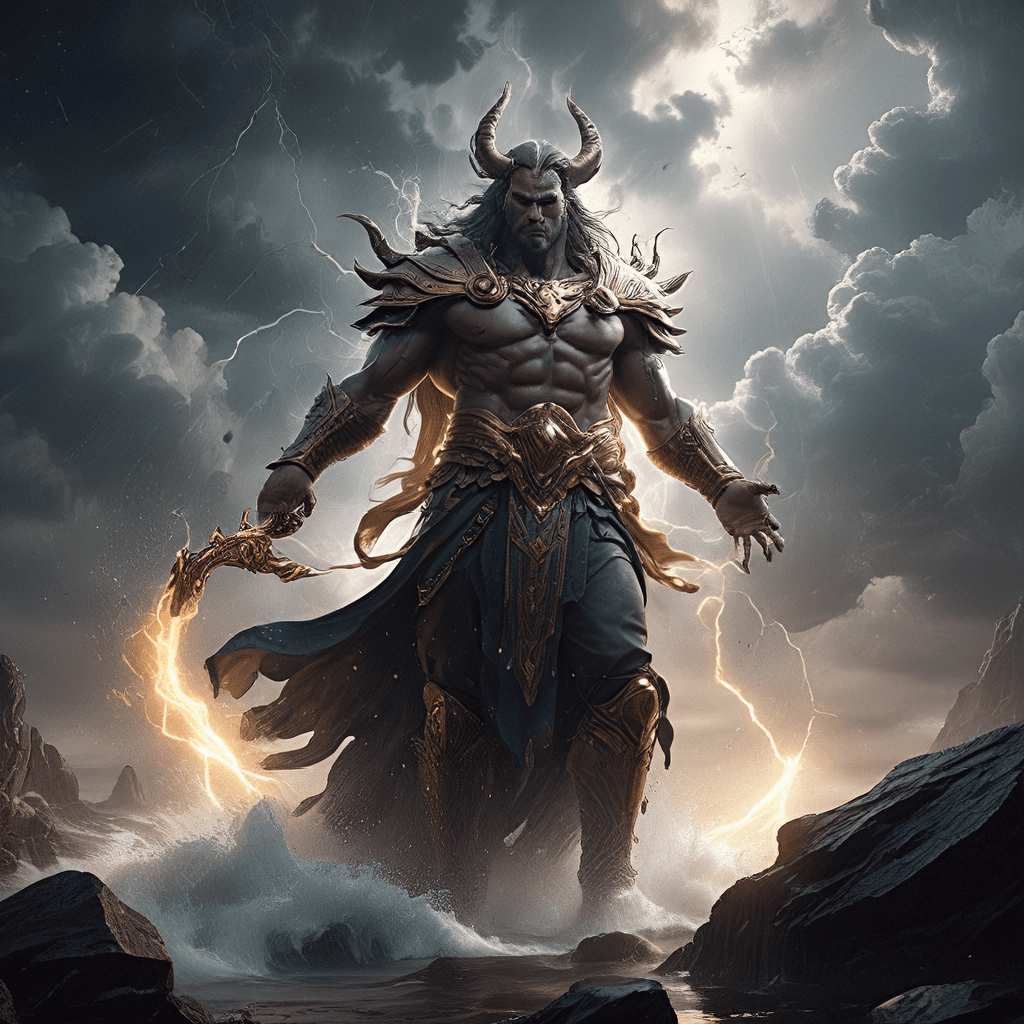Set: The God of Storms
In the vast and intricate tapestry of ancient Egyptian mythology, Set stands as a powerful and complex deity, often depicted as the embodiment of chaos, storms, and violence. Known for his fierce nature and tumultuous presence, Set played a pivotal role in shaping the mythology and influencing the lives of the ancient Egyptians. This article delves into the origins, attributes, and impact of Set, exploring his complex role in Egyptian mythology and unraveling the mysteries surrounding this enigmatic god.
1. Origins and Family
Set, the fierce god of storms, was the son of Geb, the earth god, and Nut, the sky goddess. He was born alongside his siblings, the esteemed Osiris, the benevolent god of the underworld, and the powerful goddesses Isis and Nephthys. Though part of this esteemed family, Set’s nature differed greatly from his siblings, known for his chaotic and violent tendencies. He was often portrayed as a force of nature, a powerful entity that embodied the unpredictable and destructive forces of the world.
2. Appearance and Attributes
Ancient Egyptian art depicts Set as a formidable being, a red-haired, muscular man with a fierce expression that embodies his untamed nature. He is often associated with powerful animals, reflecting his wild and untamed spirit. The hippopotamus, the crocodile, and the donkey are among the creatures often linked to Set, symbolizing his strength, ferocity, and unpredictable nature. Set wielded a powerful weapon known as the “was” scepter, a symbol of his authority and ability to both protect and destroy. This scepter, often depicted as a curved blade, was a reminder of his power and a symbol of his dominion over the forces of nature.
3. Role in Egyptian Mythology
Set held a unique and often misunderstood position in Egyptian mythology. He was the god of storms, deserts, violence, and chaos, embodying the unpredictable and sometimes destructive forces of the natural world. His storms were seen as a direct manifestation of his anger and power, bringing forth both devastation and renewal. Set was also responsible for droughts, floods, and other natural disasters, reminding the ancient Egyptians of the unpredictable nature of their environment. He served as a powerful reminder of the constant need for vigilance and adaptability in the face of nature’s capricious forces.
4. The Murder of Osiris
Set’s most infamous act, a turning point in Egyptian mythology, is the murder of his brother Osiris. Motivated by jealousy and a desire for the throne, Set lured Osiris into a decorated chest, then sealed and tossed it into the Nile River. Osiris, dismembered and scattered across Egypt, became a symbol of death and rebirth, a journey through the underworld that reflected the cyclical nature of life and death. The tragic act of Osiris’s murder, fueled by Set’s malice, forever scarred the land of Egypt and cast a long shadow over the world.
5. Consequences of Osiris’s Murder
The murder of Osiris plunged the world into chaos and disarray. The harmonious order of the universe was disrupted, and the land of Egypt struggled to adapt to the absence of its beloved king. The ancient Egyptians believed that the world was in a state of turmoil as a result of Set’s actions. However, Isis, Osiris’s devoted wife, embarked on a desperate search for her husband’s scattered body parts. Gathering them with unwavering determination, she resurrected Osiris, restoring him to life in the underworld. His rebirth symbolized hope, renewal, and the triumph of good over evil. Set, banished for his heinous act, became a symbol of the inherent darkness that lurks within the human heart. His pursuit by Horus, Osiris’s son, symbolized the eternal struggle between order and chaos.
6. The Conflict with Horus
The murder of Osiris sparked a bitter rivalry between Set and Horus, the son of Osiris. Their conflict, known as the “Contendings of Horus and Set,” represented the eternal battle between order and chaos. The two deities engaged in a long and fierce struggle, both seeking dominance. The conflict was often depicted in Egyptian art, with the two gods battling for power and supremacy. The outcome of this struggle dictated the shape of the world and the fate of humanity. Horus, representing order and justice, eventually triumphed over Set, restoring balance to the world and ensuring the continuation of life. This victory, however, did not eradicate Set’s influence, forever reminding the ancient Egyptians that chaos always lurked in the shadows.
7. Set’s Other Roles
Despite his negative reputation as a bringer of storms and chaos, Set also played some positive roles in Egyptian mythology. He was sometimes associated with fertility, representing the natural forces that bring life to the land. He was also related to the underworld, a realm of mystery and transformation. Some texts even suggest that Set played a role in protecting travelers in the desert, a perilous journey that required both strength and resilience, qualities often associated with his untamed nature. His complex and multifaceted nature reflected the complexities of the world he inhabited. He embodied both the destructive and regenerative forces of nature, reminding the ancient Egyptians that all things have a cycle, a continuous interplay of creation and destruction.




